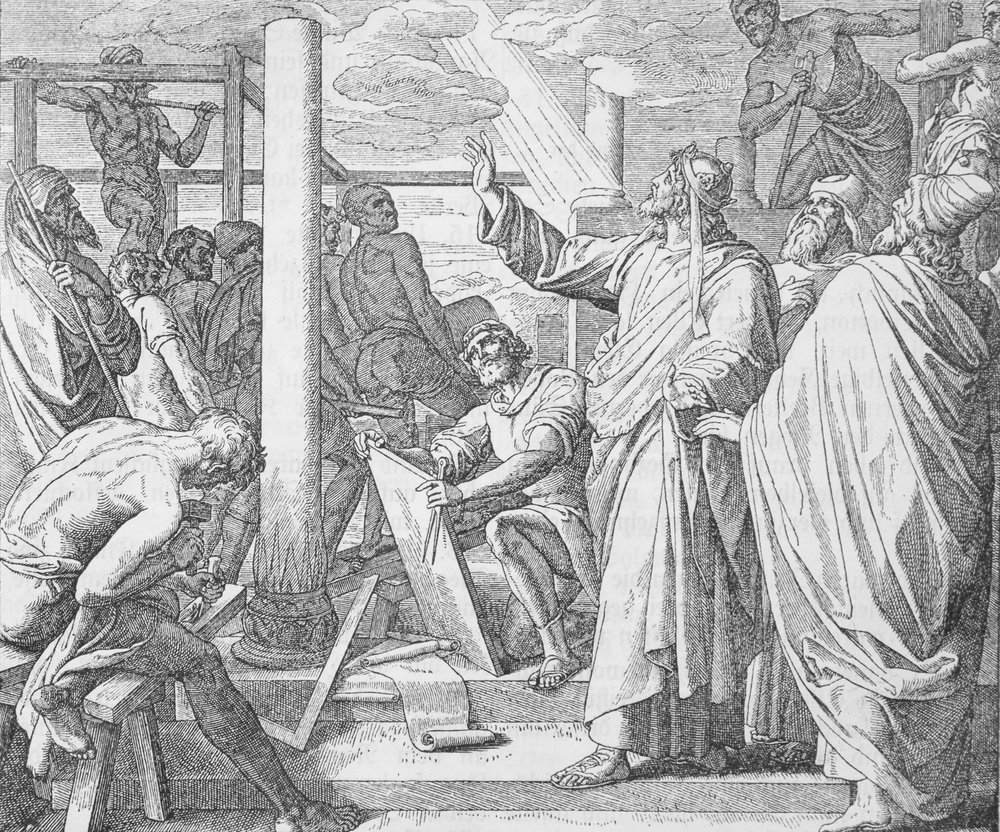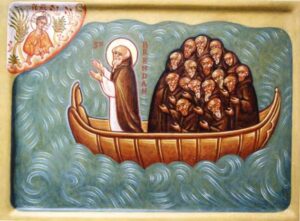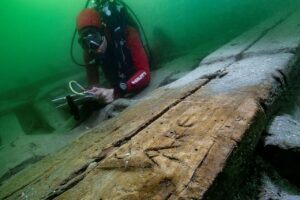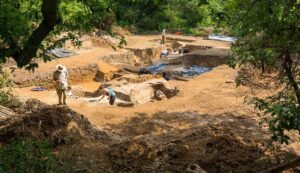In 1934, an archaeologist was digging in the Timna Valley in the sweltering heat of southern Israel. He was trying to prove that King Solomon’s Mines was no mere 19th-century fantasy adventure. He believed it was real.
Background
The fascination with biblical archaeology traces back to the Victorian era. With the Industrial Revolution came excavations and the discovery of long-buried sites like Troy, Mycenae, and Nineveh. Some of these discoveries even confirmed tales of Greek mythology and the Bible. The excitement permeated Victorian culture and led to the emergence of adventure fiction.
Enter H. Rider Haggard
The story of King Solomon’s Mines originated in H. Rider Haggard’s novel of the same name. This son of a barrister could not figure out what he wanted to do in life. After failed attempts to get into both the army and the British Foreign Office, his father shipped him off to South Africa to work as a personal assistant to a celebrated diplomat. Thus, his love affair with adventure began. Africa and its ancient legends fascinated him. He published King Solomon’s Mines in 1885, and it was an instant hit.
In the novel, he introduced Allan Quatermain, an Indiana Jones-like character who also featured in subsequent novels. Here, a man named Sir Henry Curtis enlists Quatermain for his hunting skills and knowledge of a dangerous region to help find his lost brother.
Curtis’s brother disappeared while trying to find the fabled diamond mines of King Solomon. After narrowly escaping death from hostile tribes, they discover the mines, take some diamonds home, and recover Curtis’s brother. It is worth noting that Haggard placed these mines in South Africa.
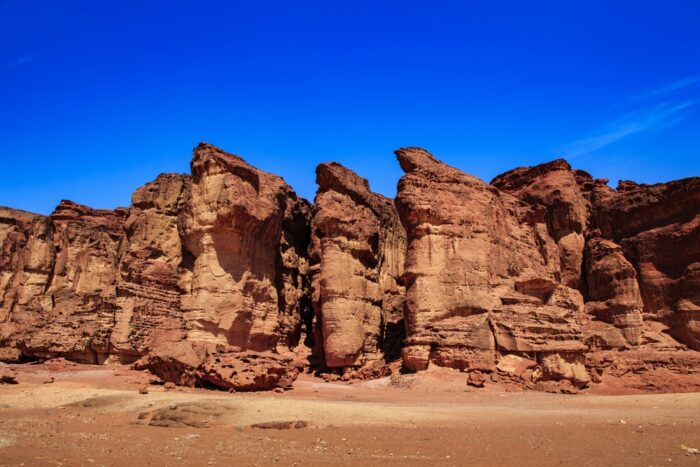
The red sandstone cliffs of Timna Valley are nicknamed Solomon’s Pillars. Photo: MstudioG
Though this is a work of fiction, there might be some truth to the story. The Bible does not explicitly say that Solomon owned mines but does speak about his wealth and his access to raw materials, which he used to create riches for the First Temple. Was Haggard onto something?
Biblical analysis
King Solomon is perhaps the most iconic king in all the Abrahamic religions. He reigned sometime between 975-926 BC. The son of King David and Bathsheba, he was famous for the wisdom given to him by God, for his military prowess and diplomatic skills, for his hundreds of wives, and for his wealth. Supposedly, it “surpassed all the kings of the earth in riches.”
He built this fortune by receiving regular tributes from local and foreign figures as well as through heavy taxation. He used this money to build the First Temple.
The Bible speaks of his wealth extensively in 2 Chronicles 9:13-29:
The weight of the gold that Solomon received each year amounted to six hundred and sixty-six talents of gold, in addition to the tolls levied on merchants and what was collected from foreign trade. All the kings of Arabia and the governors of the provinces also brought gold and silver to Solomon…
King Solomon also made a large ivory throne, which he overlaid with pure gold. The throne had six steps, and a footstool of gold was fastened to it. There were armrests on each side of the seat, with two lions standing beside the arms, while twelve lions stood on either side of the six steps. Nothing like it had ever been made in any other kingdom.
Silver not good enough
He also had around 4,000 stalls for 12,000 horses and chariots and drank only from gold cups — rejecting silver as not good enough. Much of the wealth went into Solomon’s Temple, also known as the First Temple.
But when Solomon’s reign ended, what happened to his treasure?
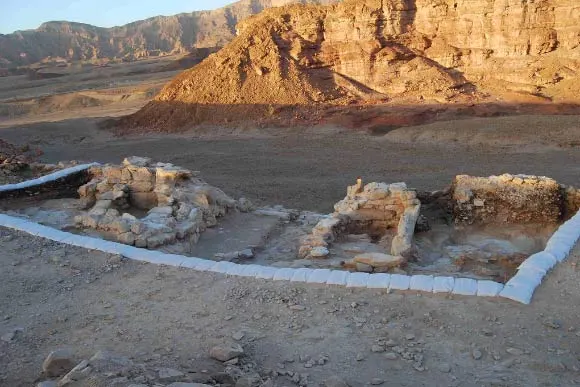
Slave’s Hill site. Photo: Erez Ben-Yosef et al.
Because of Solomon’s excesses and sins, God punished him. New enemies appeared, and the tribes of Israel rejected Solomon and his successors. His kingdom split into two entities: the Kingdom of Israel to the north and the Kingdom of Judah to the south. Israel was ruled by Jeroboam, one of Solomon’s former servants, while Solomon’s notoriously ineffectual son Rehoboam presided over Judah.
Both kingdoms suffered a devastating blow when an Egyptian pharaoh named Shoshenq removed all of Solomon’s wealth from his palace and the First Temple.
1 Kings 14:25–26 says:
In the fifth year of Rehoboam, Shishak, king of Egypt, attacked Jerusalem. He carried off the treasures of the Temple of the Lord and the treasures of the royal palace. He took everything, including all the gold shields Solomon had made.
Egyptians took it all
A temple pillar at Tell Basta, just north of Cairo, confirms the conquest. It states that Solomon’s treasures were used as offerings to the Egyptian gods.
Throughout all these passages, there is no mention of Solomon’s mines. But 1 Kings 7 explores the construction of the Temple and the materials he sourced. He cast two bronze pillars, 10 bronze carts, and four bronze wheels and axles. Solomon supposedly cast these objects “…in the plain of the Jordan, in the clay ground that lie between Succoth and Zarethan.”
This led historians and archaeologists to believe that Solomon might have used mining to sustain his wealth and maintain the Temple. So, perhaps the idea is not that far-fetched.

Illustration of Solomon receiving envoys. Photo: James Dabney
Archaeological evidence
James D. Muhly, a professor of Ancient Near East History at the University of Pennsylvania, states that there is “biblical silence” on the mines. However, numerous books on biblical archaeology do mention them, particularly Solomon’s focus on copper smelting. Solomon even bore the nickname, the Copper King.
The archaeological search for the mines began with the theories of Rabbi Nelson Glueck in 1934. He found large copper smelting slags in the Timna Valley, in the southern part of the Negev in modern-day Israel. Glueck also cited evidence of miners’ quarters.
A few years later, he excavated a mysterious mound in Tell-el Kheleifeh, between Israel’s southernmost city of Eilat and Aqaba in Jordan. This mound hid a large building complex which had a series of peculiar holes throughout the walls. Glueck believed that the building was a refinery and smelter, and the holes allowed wind to keep flames going.
He concluded that Tell-el Kheleifeh was the ancient port city of Ezion-Geber from the Bible. Here, Solomon sent ships to fetch treasures and metals.
The theory falls short
It did not take Glueck’s opponents long to poke holes in the theory. His main critic was a photographer and archaeologist named Beno Rothenberg. Rothenberg claimed that the holes in the walls were simply remnants of where beams were. Plus, mud plaster ringed the holes — not the type of material that would survive smelting.
Rothenberg did his own investigations in the Timna Valley over the years. Though he found copper mines in the area, they dated before Solomon’s reign by a century and a half. They were also under Egyptian control, as confirmed by hieroglyphs in a temple at Hathor.
In 2013, archaeologists from Tel Aviv University excavated an area in the valley called Slave’s Hill. They found smelting camps containing pieces of clothing, food, broken pottery, and furnaces dating to Solomon’s time. However, they believe the camps belonged to the Edomites — enemies of Solomon and Israel who lived in the Timna Valley at the same time.
Conclusion
Though the pieces seemed to go together well, the evidence suggests that King Solomon did not have copper mines, from which he cast his treasures, but likely sourced the materials elsewhere. If he did have mines, the Bible would have said so since it details all his other activities and sources of wealth. The legend of King Solomon’s Mines will likely remain a great work of adventure fiction. But this does not mean that other biblical treasures do not exist out there.
